Ease of care, unpretentiousness, beauty, light fragrance, therapeutic properties and flowering duration - all these qualities combined pelargonium. And it is quite natural that such a flower will want to grow on their windowsill amateur flowers.
Even in the last century, Pelargonium was blocked in each family on the windowsill. It is believed that this home plant will bring happiness to the house, the Pelargonium was called the custodian of the family hearth. But recently, due to the fact that new types of houseplants appeared, Pelagronia was moved to the background.
If you carefully familiarize yourself with the peculiarities of growing and leaving the flower, every newcomer can easily grow at home Pelargonium and then the first timid experience can grow into great passion.
Pelargonium: Description
Pelargonium is a perennial plant, refers to the Geranium family, so the herbal perennial inexperienced flower flowers are often called geranium. But in fact, these are different types, because geranium refers to frost-resistant plants, which can be grown not only on the windowsill, but also in the gardens, and Pelargonium is afraid of cold, so this flower is grown only at home.
From history, it is known that the flower was first discovered in South Africa and from there transported to Holland. A little later, he began to move through the light, and soon on the windowsill, the Frenchwoman and the British were blocked by a beautiful ceiling pelargonium. Due to the fact that the plant grow rapidly and pleases with beautiful blossoms, the Pelargonium fell in love with all the flowerfish.
Total known about 300 species, among them there are perennials, shrubs and succulent species. All combines one property - this is a pronounced flavor. Surprisingly, Pelargonia acts on all people in different ways: one becomes bad of this smell, and on others it acts soothing.
This is not the only property of pelargonium - the plant is distinguished by the useful properties, essential oils are used in the cosmetology industry, oil is added in the production of spirits and soap, and still use as a natural flavor. There are poisonous plants, after contact you need to wash your hands.
Pelargonia varieties
Unpretentious grade - zonal pelargonium. In this varietal group there are divisions on such types:
- neakhrovy flowers - in care such a plant is unpretentious. Feature - petals are located in a row;
- flowers terry - very gentle and beautiful, externally resemble unwrapped roses boutons;
- low grade plants;
- with double-color leaves - plants may differ in that they have different shape and color of the leaves;
- star - this type of plant is the leaves of pointed, therefore reminds star;
- cacti-shaped - colors rolled, white or red, more resemble chrysanthemum petals.
There are some more popular species of pelargoniums, who have very beautiful leaves, and large flowers are royal varieties. The flower diameter can reach up to 6 cm, and the petals can be smooth with the right edges or wavy different colors: from pale pink to dark purple.
What does Pelargonium look like, photo
Read the views of Pelargonium:
- Fragrant pelargonium - low-speed, grows up to a meter. The leaves are divided into several pieces, differ in juicy, bright green color. Flowers - gently pink, blooms from June to the beginning or mid-September, if the weather turned out to be warm;
- Gunning pelargonium is a semi-stabbed, heights no more than half a meter or a little more. And the shoots and leaves are published, on the part it seems that the leaves are cast as if they see that they are divided into several parts (up to 5), the leaves are published by a subtle fragrance. Flowers "Sitting", there are a lot of them, there are views from pink flowers, as well as with violet streaks. Because of this, Pelargonium is very beautiful during flowering, and this period falls on the middle of summer and lasts until the end of August;
- Fascinous pelargonium - with short escapes, wide leaves. The leaves are frustrated by a pleasant fragrance. White flowers with pink;
- Zone Pelargonium - the leaves of standard shape and color, but with a dark border along the edge. Red colors collected in inflorescences. The flowering period from the end of May and until the middle-end of September.
- Top pelargonium - in growth reaches no more than half a meter, evergreen shrub, it is distinguished by the fact that he has multiple branches, and the leaves are located in several rows. The edges of the leaves are dense and gear, pleasant aroma;
- Plusheval Pelargonium - Celling Thick shoots, the leaves are divided into slices, pubescent or unopened, up to 8 cm long, white flowers, 5-6 pcs.
Often, flower facing hybrids plants that differ from popular species of an unusual form of leaves and flowers, they were obtained by crossing. For example, in fragrant pelargonium, the flowers are unsightly, but very fragrant leaves, if you touch the plant. The fragrance is pleasant, in the bouquet you can highlight notes of fruits and flowers, as well as spices, needles and herbs.
Photo of Pelargonia
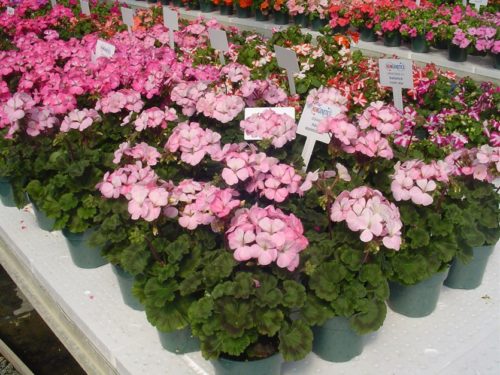
Pelargonium at home
If you set out to grow a homemade pelargonium, you need to know how to choose a flower in the store. First of all, the plant should be healthy, without pests and diseases. Carefully inspect the inflorescence and the whole bush. Even if we are confident that the plant is healthy, it is necessary to temporarily make quarantine at home so that there are no other indoor plants on the windowsill next door.
Pelargonium: Growing conditions:
- Transplant flower or not? As a rule, from the store the plant hits home in a disposable container, such a container is not suitable for growing, as the soil and the size of the capacity inappropriate. Therefore, it is possible to transplant the plant and necessary, but if the pelargonium in the pots at the time of purchase blooming, you need to wait until it blends. Then you need to prepare a pot and soil consisting of sheet and turf, humoring and sand (proportions: 1 part of the sand, 2 parts of the earth and humus). You can purchase a ready-made mixture in the store. Then it is possible to transplant the plant as needed, but not more often than 2 times a year in the autumn and spring period. Please note that if the pot is too spacious, then the plant can go to greens and then there will be no flowering.
- Growing Pelargonium is a simple task, you only need to create optimal conditions. This also applies to lighting to achieve abundant flowering, you need to organize lighting. In shaded places, the plant will not go into growth, bloom is possible, but short. Therefore, you need to choose well-lit places or window sills, in the winter period to organize the backlight. For the cultivation of pelargonium, the southern window is suitable.
- Pelargonium in winter requires rest, so in the cold season, the plant will feel great if the temperature on the windowsill will not rise above +10 degrees. If this rule does not adhere to, then with the onset of spring and heat, the buds will not. Look at the plant if the edge of the edge of the leaves darkens, it means that the plant is cold. You need to push the pot from the pelargonium to the edge of the window sill or on the night flower put on the table.
- Pelargonium is a room thermal-loving plant, but the direct sunlight falls in the summer can not withstand, so it is necessary to sharpen the plant. The optimal temperature for prolonged flowering from plus 18 to 25 degrees. If you put a pot on a balcony or loggia, in the fresh air, the plant adapts faster and tolerates heat well.
Pelargonium home, photo
Growing Pelargonium from Seeds
You can grow a pelargonium from seeds if there is a good planting material.
Growing Rules:
- the seeds of this plant are large, so enough in a separate cup to plant one seed into the depth of half a centimeter;
- if there is little space on the windowsill, but it is planned to propagate the pelargonium in large volumes, you can sow seeds into boxes for seedlings or adapt containers, then the distance between seeds should be at least 2 cm;
- as soon as the seedlings rise, it needs to be divened to other, individual pots;
- when landing uses a universal soil intended for growing plants in pots;
- before planting seeds, they need to be processed, immerse in solution - growth stimulator for 1-2 hours. Thanks to such preliminary preparation, the seeds become stronger, faster ride and shoots will be strong;
- when growing seedlings, it is necessary to observe the temperature regime (within 20-25 degrees) and not forget about the lighting, because the plants love a lot of heat and light;
- the care of the seedlings of Pelargonium is not difficult task, but it is important not to miss the moment when the graceful seedlings need to be transplanted. After the appearance of 2-3-leaf leaves, the pelargonium must be transferred to a capacity of slightly larger size, and when the plants rise, they will become fixed and achieved in growth to 10-12 cm, they can be placed in constant vases.
This method of reproduction of pelargonium is considered to be not rapid, but the most optimal, because thanks to the cultivation of seeds you can get abundant bloom. Only one plant can release up to 25-30 buds!
How to grow a pelargonium from cuttings
Homemade types are well multiplied with cuttings, they need to cut and root, and when the plants are fixed - to transplant into a permanent pot.
Read more about Pelargonia's grip:
- from a strong adult plant, the top cuttings are cut off, which have 2 or 3 interstices. The length of the cutting - no more than 7 cm;
- to prevent the cutting cut from the cutoff, it must be lowered for a few seconds into the ground charcoal with the addition of water;
- before planted into a pot of cuttings, you need to prepare soil if you took a ground from the garden (to choose from: to disappear over boiling water for half an hour, rolling in the oven, to be treated with special antiseptic solutions, shed cool boiling water or withstand in the cold);
- planting Pelargonium: in a slightly moistened soil, cover top with a can or a cropped plastic bottle to create a greenhouse effect;
- try not to overheat the cuttings, the maximum permissible temperature of +23 degrees, moisturizing - moderate;
- the rooting is given from one and a half to three weeks, depending on the type of plant.
If such a way it seems to you long, you can put the cuttings into a jar with water and wait for them to be empty to the roots and then put in the pumps with soil. Note that large vases slow down the flowering process. If everything is done correctly, expect blossoms after 5, a maximum of 7 months after rooting.
Remember that some kind of home pelargonium is poisonous, so it is necessary to wash your hands after working with the plant.
Trimming Pelargonia
Since all Pelargoniums grow rapidly and gradually lose the lower leaves, then the stems are quickly taken away. Therefore, it is necessary to periodically crop plants, so the bush will look neat, will not throw off the buds. In addition, trimming is the rejuvenation of the plant of pelargonium.
How to perform pruning:
- A favorable time for this manipulation is autumn, but if a transplant is required - you can simultaneously transplant and crop the plant with the onset of spring.
- Crop needed both the top and the bottom, cutting the roots.
- To form a fluffy and low bush, you need to make a short trimming, leave hemp, 5 cm long. Please note that this method will move the flowering for several months (12-16 weeks).
- Scroll should be made sharply sharpened knife, form.
- Make sure that the cut of the branch is higher than the interstice and there were no kidneys growing deep into.
- If you need to form a thick crown, make the pie.
How to care for pelargonia
Pelargonium in the care of unpretentious, speaks well to moderate watering, compliance with the temperature regime, but requires compliance with the rules:
- watering Pelargonium in the summer - abundant, regular, but without water stagnation, so you need to make a good drainage before planting seedlings (it can be small marine pebbles or broken shards, bricks);
- flowers of Pelargonium in summer heat watered as the soil drying, gradually, in the morning and evening. In the cold time, watering is reduced to 2 times a week, and perhaps it will be enough once in 2 weeks. Spraying is undesirable not to destroy the plant;
- watering a home flower only under the root so that the water does not fall on the leaves;
- it is necessary to periodically loose soil so that the roots breathe;
- if irrigated, brown spots will appear on the leaves;
- making feeding is regular, with the exception of winter months, when the plant is at rest. In the summer and spring, the nutritional mixtures are made twice a month. The perfect nutritional mixture: nitrogen, magnesium and potassium in the same proportions. Before the plant blooms, the amount of nitrogen needs to be reduced, but increase the dose of potassium;
- to achieve abundant flowering, a drop of iodine is added to the water for watering, on a liter of water. One adult bush will need up to 50 ml of the finished solution. To prevent burns on the leaves, watering the pot on the wall.
Problems in care for home pelargonium
In appearance, you can understand what mistakes were in the leaving of the plant:
- Pelargonium dries due to improper care: maybe in the room too hot, there is not enough moisture, the soil is too dense or needed feeding;
- if yellow leaves are root rot, you need to transplant the flower in another pot with new earth;
- why there is no flowering - the plant lacks light, the drainage and water in the pot is incorrectly made, the temperature in the room is above +25 degrees;
- the plant stopped in growth, the leaves are withering, perhaps it is a lack of minerals, you need to check the soil acidity. In addition, growth can suspend due to the fact that the pot is small;
- green, strong leaves, but there are no colors - this is an oversupply of fertilizers, you need to dry the plant (frequent watering), and also wait until the roots fill the pots space.
Pelargonia diseases
Despite the ease of care for pelarges, this plant is attacked by pests and diseases. The pests - the wave and whitebarry, from which it is easy to get rid of, if we treat with special means (for example, spraying aspirin solution, a tablet on 8 liters of water or a special means of "marathon"), sometimes the plant attacks pincers, then fungicides will come to the rescue.
Diseases and how to get rid of them:
- disease The black leg appears due to excessive irrigation, or if the soil was infected. The base of the stem is spoiled, but you can try to discharge the pelargonium if the disease at the initial stage. How to get rid of: At the initial stage, sterilize the soil or replace the pot to the new, handle. If late - get rid of the earth, pots and plants;
- on the leaves, a gray mold appeared - this is a fungus, you need to cut these leaves, perform the processing of the plant by fungicide. At the same time, watering decreases, the room must be well ventilated;
- edema on the leaves - the mooring of the soil. Get rid easily, you need to reduce watering;
- "Eden" or "Edema" - the tub-shaped growths on the leaves appear due to frequent irrigation. All damaged leaves must be cut off, and watering - reduce;
- phytoofluorosis is the damage to the fungus, the plant quickly fades. Infection occurs through the soil or disputes spread through the air, if there are drafts. At the initial stage, you can get rid of the disease, processing leaves with special preparations (for example, prejection). All the affected areas need to be removed, and the location of the cut is triggered by crowded charcoal. Helps the transplant of plants in the calcined soil and sterile pot.

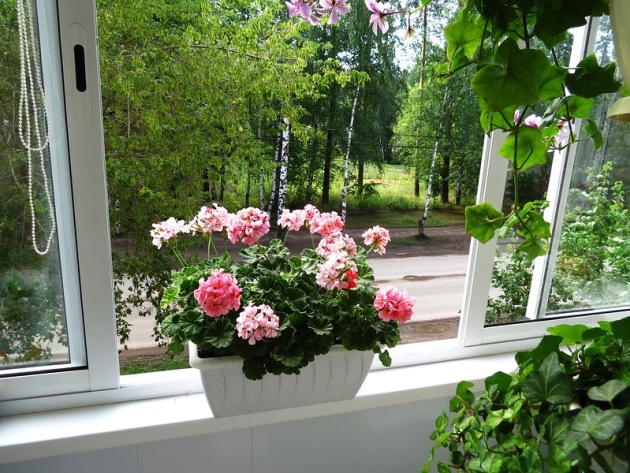
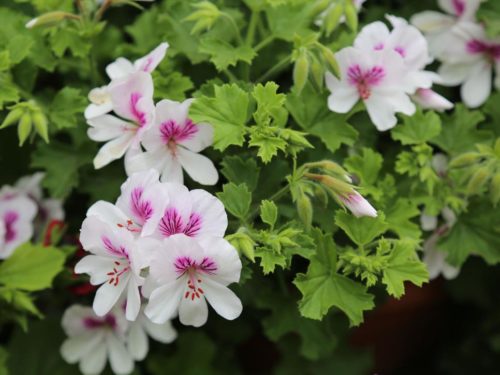
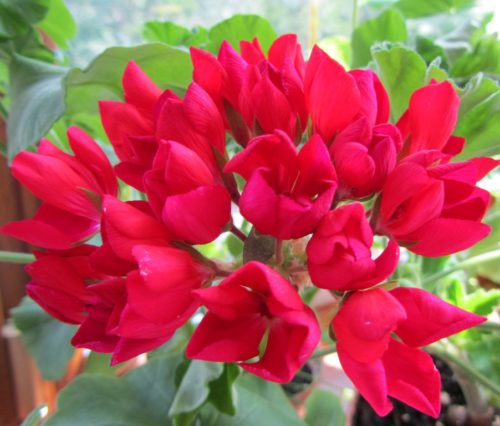

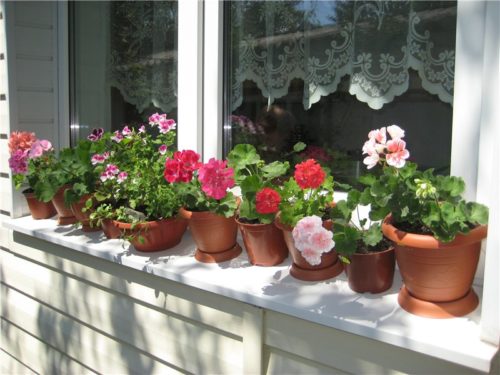
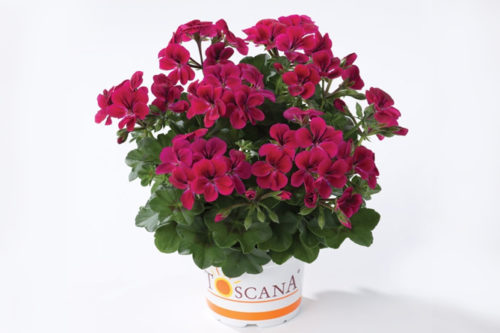

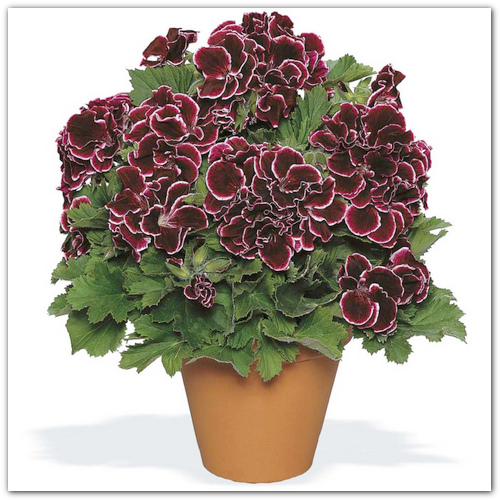
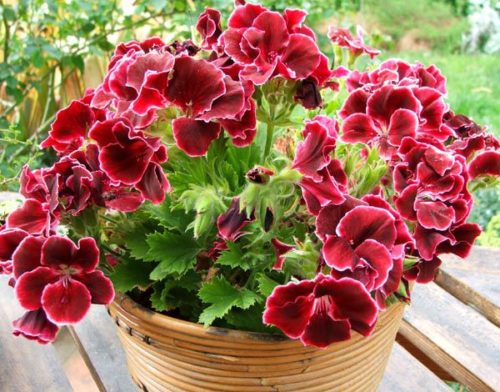

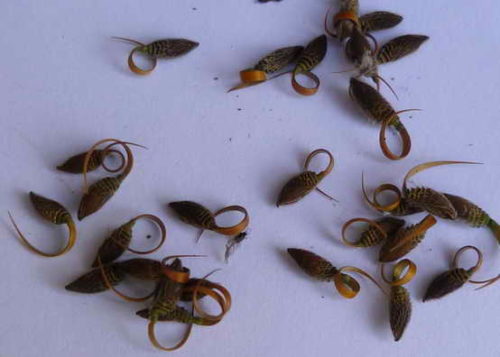


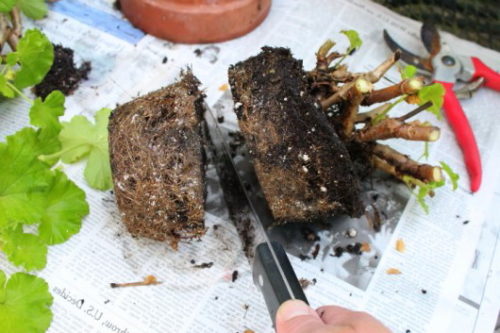
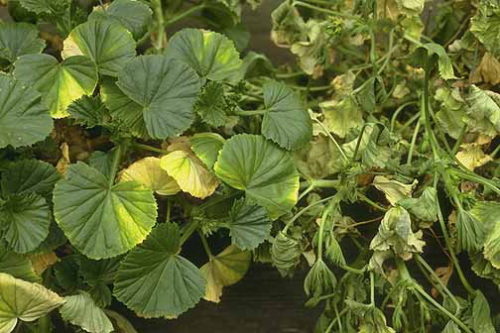
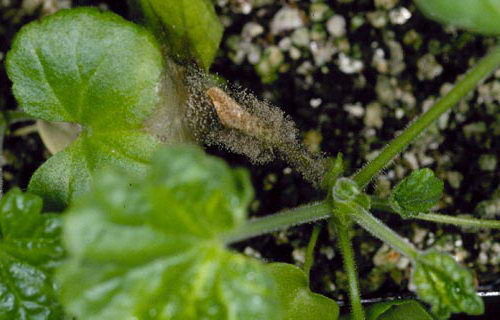












 Start a discussion ...
Start a discussion ...